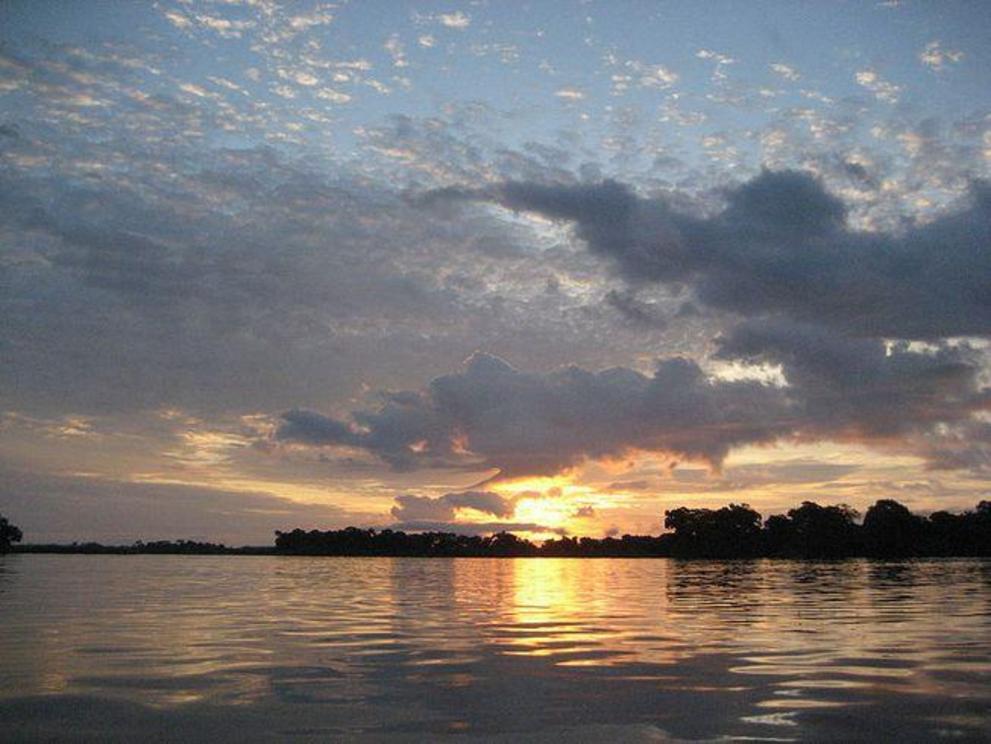Mysterious blind 'ghost fish' reveals Congo to be the deepest river in the world
The Congo River is the deepest river in the world.
The waters of the Congo River in Africa are some of the world's most mysterious. This is the river that inspired Joseph Conrad's "Heart of Darkness"; it crosses the equator twice, cuts through the world's second largest rainforest, and its basin is home to some of the highest levels of biodiversity on the planet.
And only just now have we discovered the true depth of this beguiling waterway.
It turns out, the Congo River is also the world's deepest. It has underwater worlds we never knew existed, and strange blind creatures lurking in its hidden abysses.
The first hints at just how deep this river ran came a few years ago, when peculiar ghost-white fish began washing up on the Congo's lower shores. These fish looked like cave fish; they were blind, with pale-bleach skin, like organisms adapted to life in dark caverns concealed from the light for millennia. But this was a roaring river, and there were no caves around from where these fish could have emerged.
Melanie Stiassny, an ichthyologist at the American Museum of Natural History, was among the first scientists on the scene. She noticed a clue: these fish would die almost immediately upon flopping ashore, with bubbles seeming to fizz from beneath their skin and from their gills, reports Cosmos.
Stiassny recognized the symptoms. These blind ghosts were suffering from the bends.
"This animal was dying from catastrophic decompression syndrome," she said.
Decompression syndrome is the same thing that happens to human divers when they experience a rapid pressure change, such as when a diver ascends from the depths too quickly. For this fish to have experienced this condition, it too would have had to rise rapidly from some fathomless depth.
"This fish dying in my hand asked the question, 'Could there be deep water here?'"
Hidden worlds of the Congo
So Stiassny gathered a group of whitewater kayakers, armed with depth-measuring equipment, for an expedition to map the unknown deepness of this most mysterious of rivers. What they found was astonishing.
The Congo has obscure pockets that aren't just deep, they're immensely deep. The team measured certain parts that were over 700 feet deep, in fact. And that's not all. Doppler current profilers showed that some of these pockets contain their own hidden worlds, cut off from the rest of the world by strong ascending and descending currents and powerful swirling eddies. These currents essentially act as boundaries that can't be crossed, allowing the creatures within them to evolve separately from their free-swimming brethren.
"They are dividing up populations and preventing them from interbreeding at a very fine geographical scale," said Stiassny. "So you can see why there’s a lot of [diversity]."
The blind ghost fish were coming from one of these deep cave-like pockets, beyond the glare of the equatorial sunlight. They had likely escaped their pitch-black underworld after being swept up in a strong current and brought to the surface in a rapid instant. If only they had eyes to see, what light-drenched wonder they might have gazed upon before succumbing to the pressure change.
The discovery was a wake-up call for Stiassny, a reminder that there might be whole new realms to uncover beneath the stirring waters of the Congo. There might be species there that we've never seen before, trapped for generations by the river's vortices.
She noted that the Lower Congo is an unexplored natural laboratory for studying how species evolve. It's a domain where you don't need actual caves to harbor blind cave fish, where adaptations to obscure niches might turn up bizarre traits, and where biological mysteries unveil themselves to reveal hidden provinces of ghostly critters.
"The lower Congo is truly a hotspot of biological diversity," she said.

